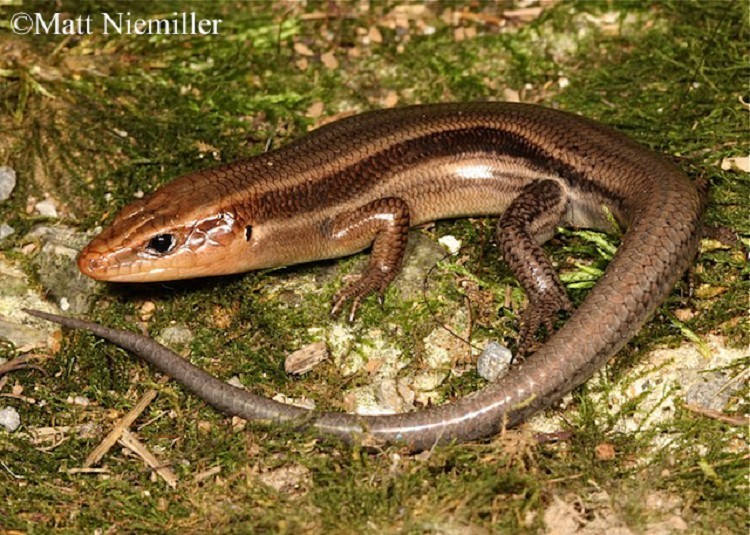Common Five-lined Skink Plestiodon fasciatus
The Common Five-lined Skink occurs statewide and is probably the most common lizard in TN.
Description: A moderately large, shiny lizard (5.0 to 8.5 inches in length) with highly variable color pattern. Generally the body is brown or black with 5 white or yellowish stripes extending onto the tail. Adult males are uniformly brown or olive with faint stripes; and reddish or orange coloration on the head during the breeding season. Adult females are typically brown with faded stripes and gray or blue-gray tail. Juveniles have a bright blue tail and distinct stripes.
Similar Species: Easily confused with Broad-headed Skink and Southeastern Five-lined Skink; positive identification can only be assured by examination of the scales. Broad-headed Skinks have 5 labial scales (along the upper lip between the nose and eye) and Southeastern Five-lined Skinks do not have enlarged middle row of scales under the tail.
Habitat: Prefers moist wooded areas with plenty of cover and open areas for basking. Often found on or under woody piles, stumps, logs, bark, rock piles, and abandoned buildings; occasionally climbing trees to avoid predators.
Diet: Mainly insects such as spiders, crickets, grasshoppers, termites, and beetles; occasionally frogs, smaller lizards, and newborn mice.
Breeding information: Courtship and breeding occur in the spring. Females lay 4-14 eggs under rotten logs, stumps, rocks, or leaf litter during the spring or early summer. Females remain with the eggs for 1-2 months until they hatch.
Status in Tennessee: Common across the state with some isolated populations. Tolerant of human disturbed habitats such as timber harvested woods.
Fun Facts:
• Also called "Blue-tailed skink."
Best places to see in Tennessee: Any log or rock piles near wooded habitat.
